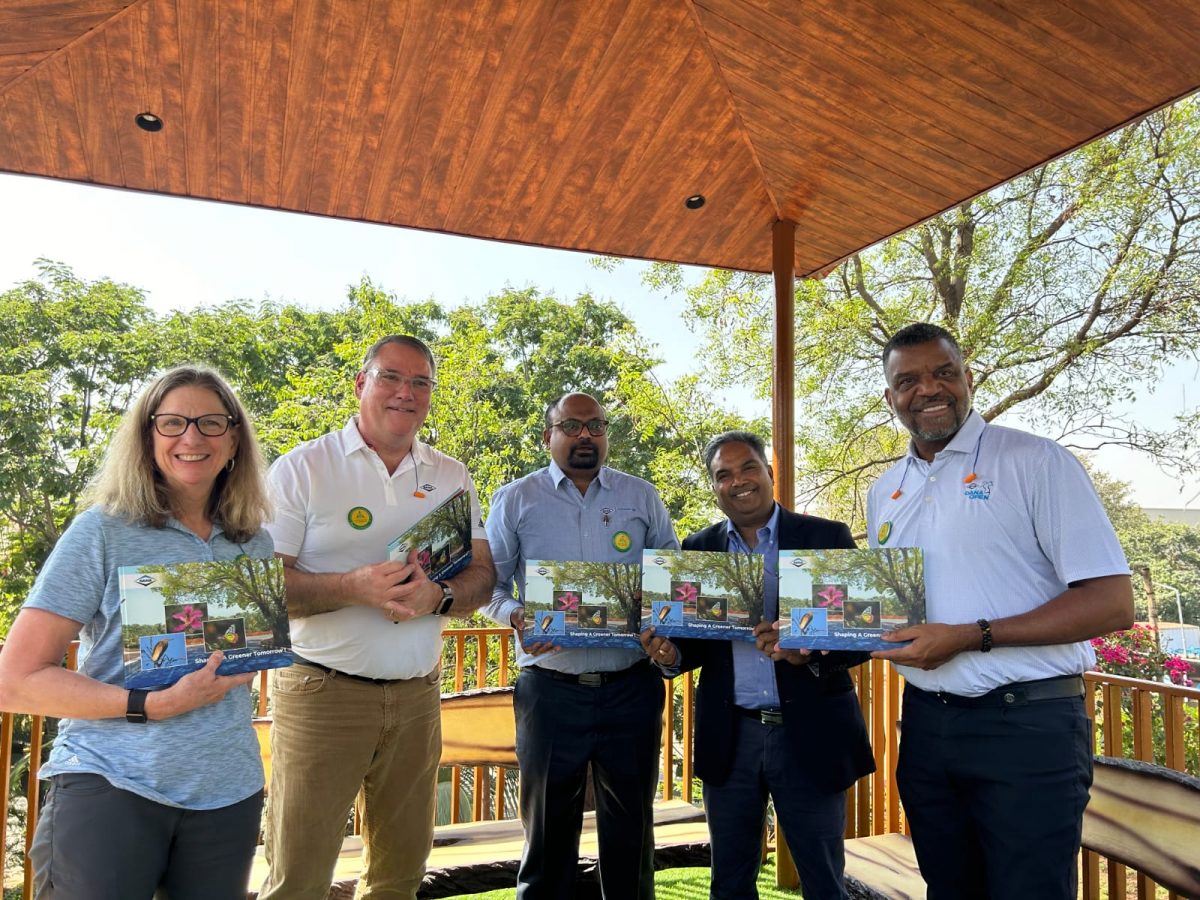Uncovering of Book on Biodiversity Mapping at DAIPL-Chakan
Published On: 29th March, 2024
It was a great opportunity of uncovering of book on Biodiversity mapping from the hands of Dana Global leadership, Mr. Byron Foster (BU Head – LVD), Mr. Chris Clark (Sr. VP Global Ops) & Ms. Lonnie Holmquist (VP Global Quality) in presence of Mr. Mahendra Goyal (MD-DAIPL), Mr. Naresh Moily (COO-DAIPL) & DAIPL team, on 5th March 2024 during their visit to India.
DAIPL Chakan, has taken steps to record and preserve biodiversity in the premises. The efforts of last almost 25 years of plantation and preserving biodiversity is documented as baseline mapping in year-long study conducted at the premises by involving experts.
The quantum of carbon that is biologically Sequestrated in the trees of premises and its yearly additional carbon Sequestration Potential is mapped as a part of study. The biodiversity documentation of the flora and fauna, both of which are vital components long term strategic
objectives of Dana connected with UNSGDs.
The study has given an outcome which has created a further step to increase biodiversity at the premises. The natural wealth is mapped for the biodiversity.
The study outlines:
A) Total No. of Species:
a. Plants :110 species
b. Birds : 50 (including 2 endangered species)
c. Butterflies : 35 (including 5 endangered species)
d. Reptiles : 04 (including 2 endangered species)
e. Mammals : 02 (including 1 endangered species)
B) Total Carbon Stored in trees @DAIPL Chakan campus is 69.69T with sequestration potential of 1.39 T/Year.
Additional efforts taken in 2023 are medicinal plantation and rose garden. The biological wealth of the premises is also displayed within the premises to increase awareness and connect with people.
This coffee table book will act as an inspiration for workplaces in the future to implement sustainable practices so that we can coexist harmoniously with the environment. Along with other initiatives, this will create a sustainable ecosystem that will support to promote the
enrichment of biodiversity and increased biological carbon sequestration in long run.


